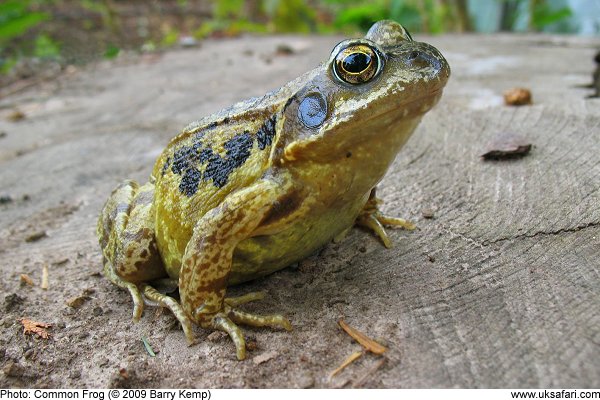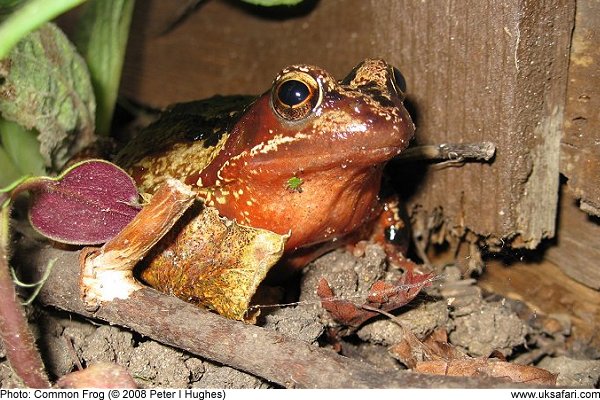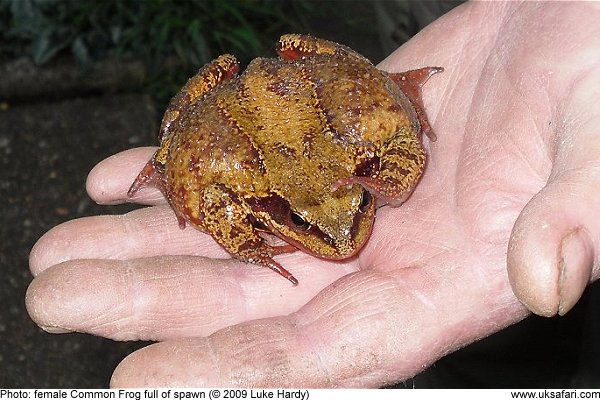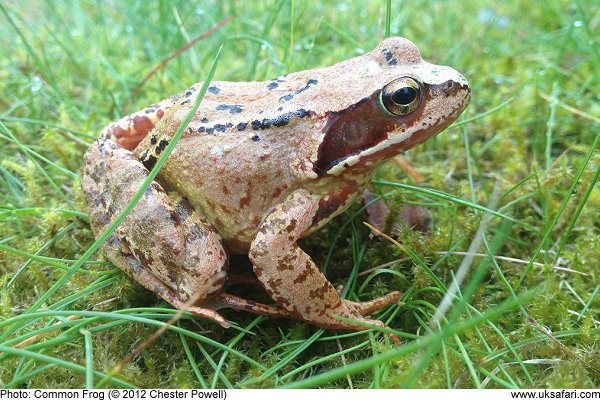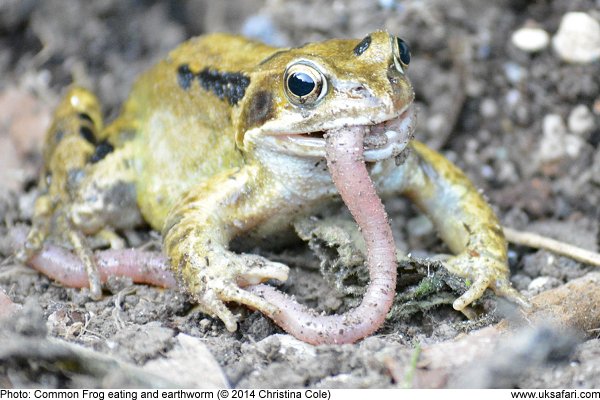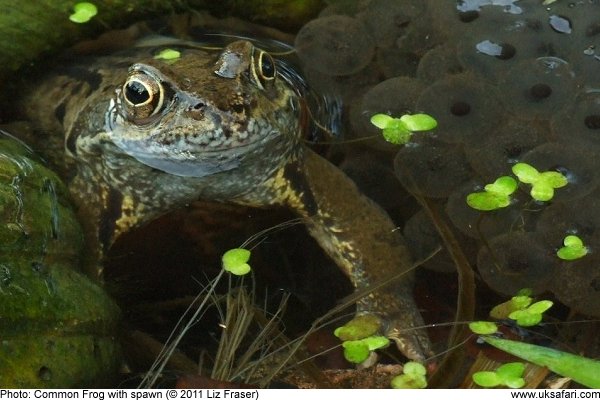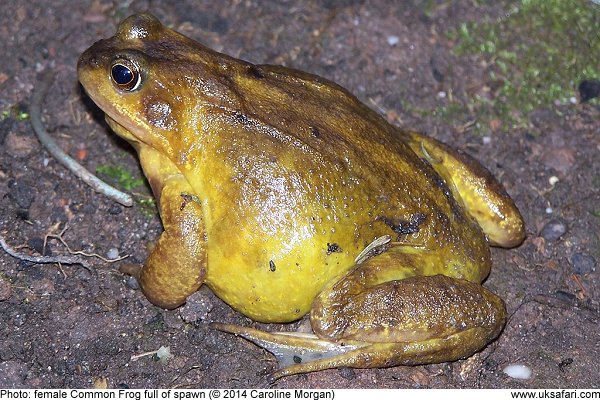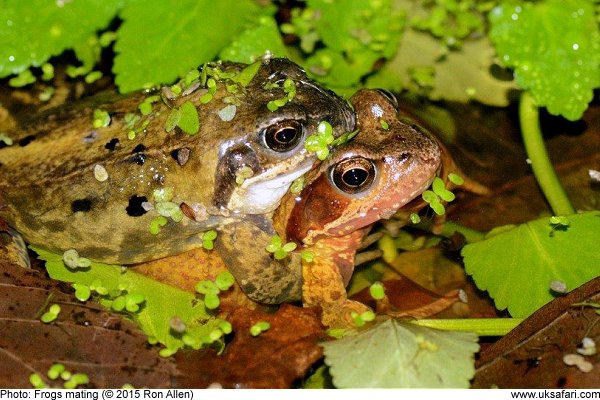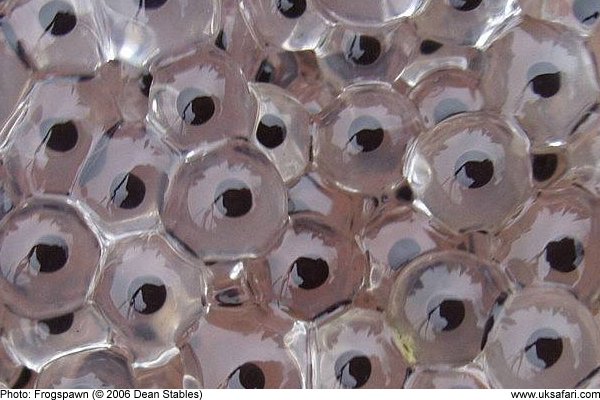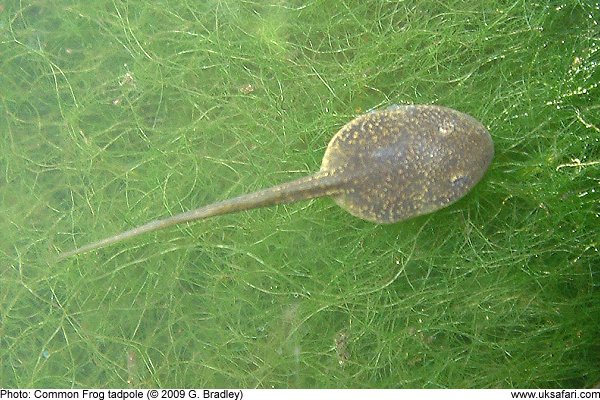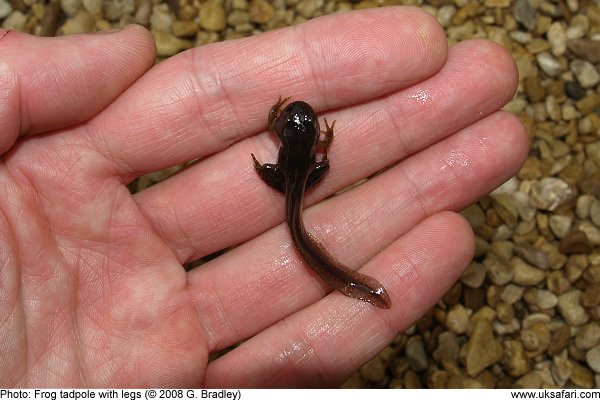 Quick Facts
Quick Facts
Scientific name: Rana temporaria
Size: 70mm - 120mm. Females are larger than males
Distribution: Found in most parts of the UK
Months seen: March to October. Hibernates through the winter, often underwater
Life Span: Approx. 6 years
Habitat: Damp woodlands, meadows and gardens
Food: Insects, slugs and small worms. The tadpoles eat aquatic insects and plants
Special features: Although called the common frog, this species is now becoming much less common in the UK, especially in rural areas. The widespread use of pesticides, and the diminishing number of breeding ponds has greatly reduced their numbers.
The colour of Common Frogs can vary a lot (see photos) but the majority are olive-green with black patches. In addition to this camouflage colouring they have eyes and nostrils on top of their heads. This allows them to see and breathe while keeping most of their body hidden underwater.
Many frogs find refuge in urban gardens, but here too there are threats to the frogs survival. Domestic cats pose a danger, and also feeding on slugs which have been poisoned by slug pellets.
Their breeding season runs from January through to April, although some frogs will continue spawning until late summer.
Each female lays up to 2000 eggs (called frogspawn) in water. Only about 1 in 1,000 will survive to become a mature adult frog. After three or four weeks, the eggs hatch into tadpoles, which look like little fish. They breathe oxygen from the water through a pair of gills located just behind the head.
The tadpoles remain in the water for a further ten weeks, feeding on a mix of plantlife and insects. During this time they develop front and back legs, their tails die back, and their lungs develop ready for breathing air on dry land.
At this 'froglet' stage of their lives they look like miniature replicas of their parents, and they are now ready to leave the water and feed on land. Their diet becomes purely carnivorous - preferring insects, slugs and worms which they catch with their long, sticky tongues.
 Related Pages
Related Pages

 Popular Pages
Popular Pages
Amphibians, Bats, Badgers, Beetles, Birds, Birds of Prey, Bumble Bees, Butterflies, Caterpillars, Creepy-Crawlies, Deadly Spiders, Dolphins, Dragonflies, E-Postcards, False Widow Spiders, Free Newsletter, Frogs, Fungi, Garden Spiders, Glow-Worms, Grey Squirrels, Hedgehogs, House Spiders, Ladybirds, Mammals, Marine Mammals, Moths, Owls, Reptiles, Spiders, Toads, Trees, Wildlife Hospitals
Copyright © 2020 G. Bradley UK Safari. All rights reserved | About Us | Links | Contributors


 Common Frogs
Common Frogs